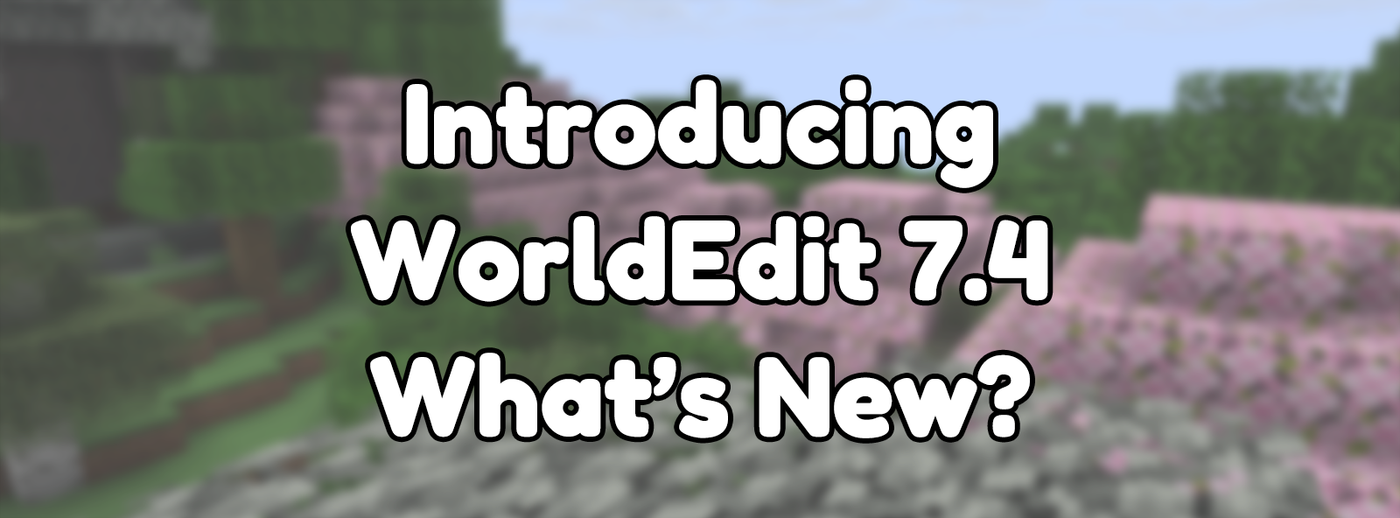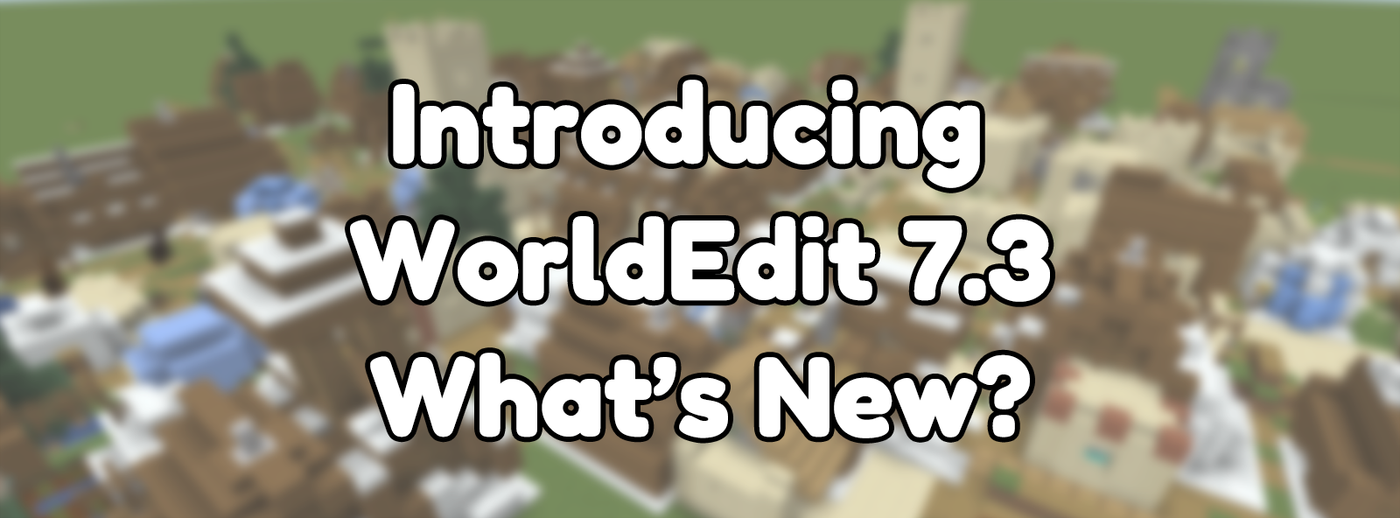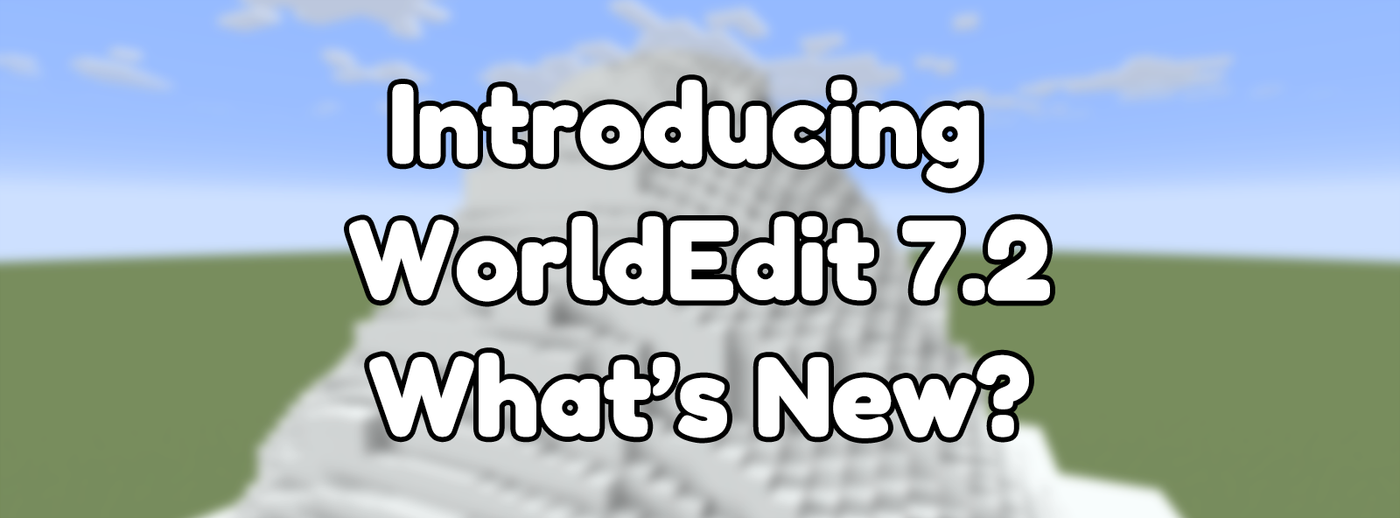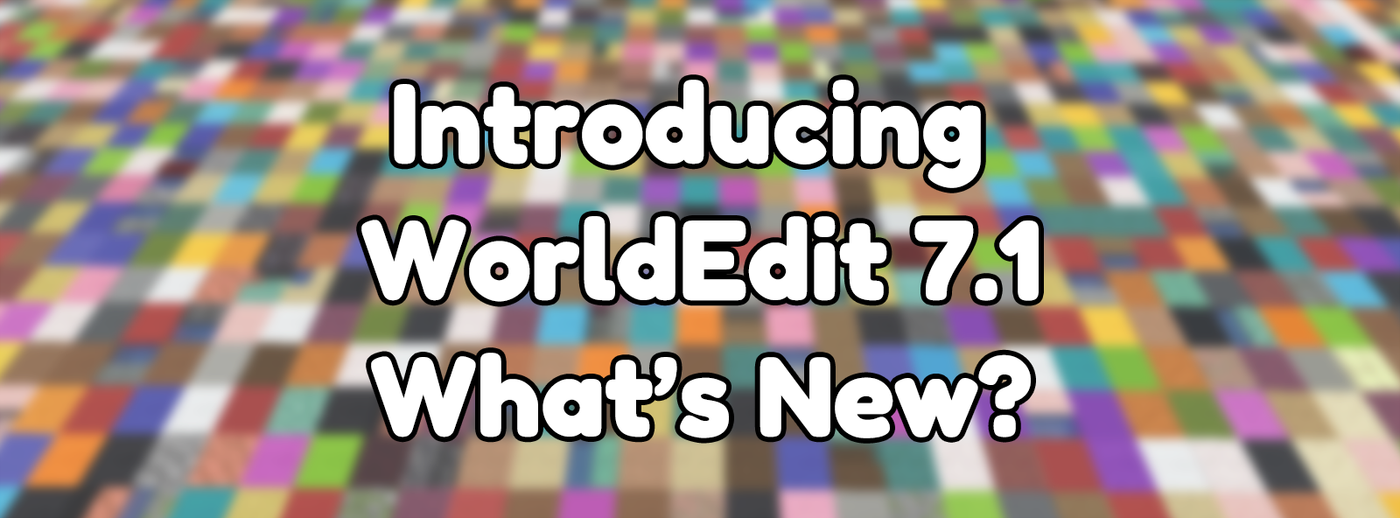
What's new in WorldEdit 7.4?
Posted on Dec 24, 2025 by Maddy Miller
In Minecraft with tags Announcement, WorldEdit
Part 5 in a series on WorldEdit Release Notes
1268 words, 5 minutes to read
We’ve been working hard on WorldEdit 7.4, and it’s finally ready for release. This release has mostly focused on internal changes and cleanups to ready us for WorldEdit 8, with many API improvements and deprecations. In saying that though, we’ve made sure to include a fair few new features that have long been requested.
New masks
In WorldEdit 7.4, we’re adding a few new masks. Some by popular request, others to fill gaps in the functionality of other masks.
First up, we have the new #clipboard mask. This mask only replaces blocks that match the current clipboard. This is most useful for comparing the difference between areas. For example, you could use an inverted #clipboard mask (!#clipboard) with the replace command to set all blocks that differ between the saved schematic and the in-world copy with red wool, highlighting differences. //replace !#clipboard red_wool.
Next, we have the #fullcube mask. This one is similar to the #solid mask, however it only matches blocks that actually fill the entire block. This means that it’s useful for matching blocks that are visually “solid”, rather than just ones that prevent movement no matter their actual size.
Thirdly, we have the ~ mask. This is an adjacency mask, that works similarly to the existing offset masks. Rather than checking only the above (>) or below (<) blocks, the adjacency mask will check all adjacent blocks to see if it matches. For example, if you wanted all blocks around diamond_ore to be replaced with tnt, you could run //replace ~diamond_ore tnt. Notably though, this mask does not exclude itself. If a diamond_ore block is next to a diamond_ore block in the selection, these would still match for adjacency. In situations like this, you can combine the adjacency mask with a negated block mask, such as ”~diamond_ore !diamond_ore”, which would match all blocks adjacent to diamond_ore that aren’t diamond_ore themselves.
Registry command
The //registry command is new in WorldEdit 7.4, and a modern replacement for the /searchitem command. This new command allows you to search any of the game’s registries that WorldEdit hooks into. This includes block types, structure types, block tags, biome types, etc.
It also allows searching and globbing, allowing you to use multi and single character wildcards. For example, * means match any characters, including multiple. While ? means match any single character. So woo? will match the words wool and wood but not the word woods, as ? only matches a single unknown character. Whereas woo* will match wool, wood, and woods as it can match multiple unknown characters.
Improved tree generation features
Thanks to recent changes to Minecraft, we’ve been able to improve our tree generation system. The new system directly pulls in supported tree types from the game itself, thereby automatically supporting any new trees added to the game, as well as significantly improving support for trees added by mods.
The one caveat to this, however, is that it’s much more restrictive about tree placement than the old system. While the old system would generate trees almost anywhere, even to a problematic degree, the new system within Minecraft performs more checks to ensure trees can go there. While this restrictive behaviour does actually make sense for most people wanting to plant a few trees, or generate a forest, it can be a hindrance for various forms of map making. If this is the case for you, you can still generate trees without restriction via either the //feature or /brush feature commands.
Revolve command
We’ve added a new long requested //revolve command in WorldEdit 7.4. This command lets you make a selection, and then have that selection pasted (or, revolved) around the player’s position (or the placement position set with //placement). This makes it easy to create circular rooves, towers, or really anything that benefits from a repeating texture stacked in a circle.
More clipboard-based interactions
In WorldEdit 7.4, we’re adding clipboard interaction to a few existing systems. Firstly, you can now //regen right into a clipboard instead of the world, by doing //regen -c. This will put the area that would’ve been regenerated into the world, into the clipboard instead. From here you can do anything you’d normally use a clipboard for, or you can use it alongside the new #clipboard mask for some interesting effects. Eg, replacing all blocks that match the regenerated terrain with air (//replace #clipboard air), only leaving blocks that have been modified from natural world generation.
We’ve also added the ability to use the clipboard as a block source for the //deform command. Using the -l flag on both, any deformations you do will use the clipboard’s blocks and coordinate space. This feature can be very powerful in some circumstances, such as making versatile advanced brush effects that can be easily reused in any situation.
New extend selection mode for polygon selections
Similar to the existing extend selection mode for cuboids, that allows extending the existing shape, we’ve also made one for the polygon selection mode. Usable via //sel polyextend, this new selection mode extends the existing polygon shape by creating a new point along the closest edge to the newly added point. This is mostly useful for refining existing polygonal selections with finer detail.
Cleanups and much more
As mentioned, a large focus of this release has been on under the hood cleanups, mostly getting things ready for our next major release. As part of this, we’ve deprecated various aspects of the API that we plan to remove in WorldEdit 8. If you’re a developer working on plugins, it’s a good idea to fix any deprecation warnings you see when building against WorldEdit 7.4, as those will likely be errors once WorldEdit 8 is out.
We’ve also made many small changes all over WorldEdit to make a lot of the common use cases we see asked about in our Discord server easier. For example, you can now filter the output of the //distr command with a mask (-m), the type applying pattern can now be used with other patterns (eg, ^#clipboard), and we’ve added helper APIs such as one to set the copy region on a PasteBuilder. While these aren’t big flashy features, they simplify a lot of the more common requests.
If your system supports it, WorldEdit will now provide command suggestions for the various schematic files you have installed. This should reduce the need to use the /schematic list command for simple cases where you know what schematic you’re after, but don’t quite remember the exact name of the file.
Conclusion
While this release isn’t as flashy as others have been in the past, it contains many important under the hood changes to get us ready for WorldEdit 8. As you might’ve guessed, the next non-patch release will almost certainly be WorldEdit 8 at this point, unless we have a very good reason to release a 7.5 instead. As always, we can’t provide any estimates on when that’ll come. WorldEdit is a community project, and we work on this in our spare time. We have some ambitious goals for WorldEdit 8, which can take time to finish.
If you’d like to make code contributions, we accept PRs on our GitHub, and you can come chat to us about them in the #dev-team channel in our Discord. Otherwise, we greatly appreciate any monetary contributions on our GitHub sponsors page to help us cover infrastructure costs.
We also have a CrowdIn project, to crowdsource translations across all the various languages that Minecraft supports. As each new release adds new features, there are new strings to translate to the many languages.
As always, links to downloads for each platform can be found on the WorldEdit website. The full changelog is available on GitHub.



